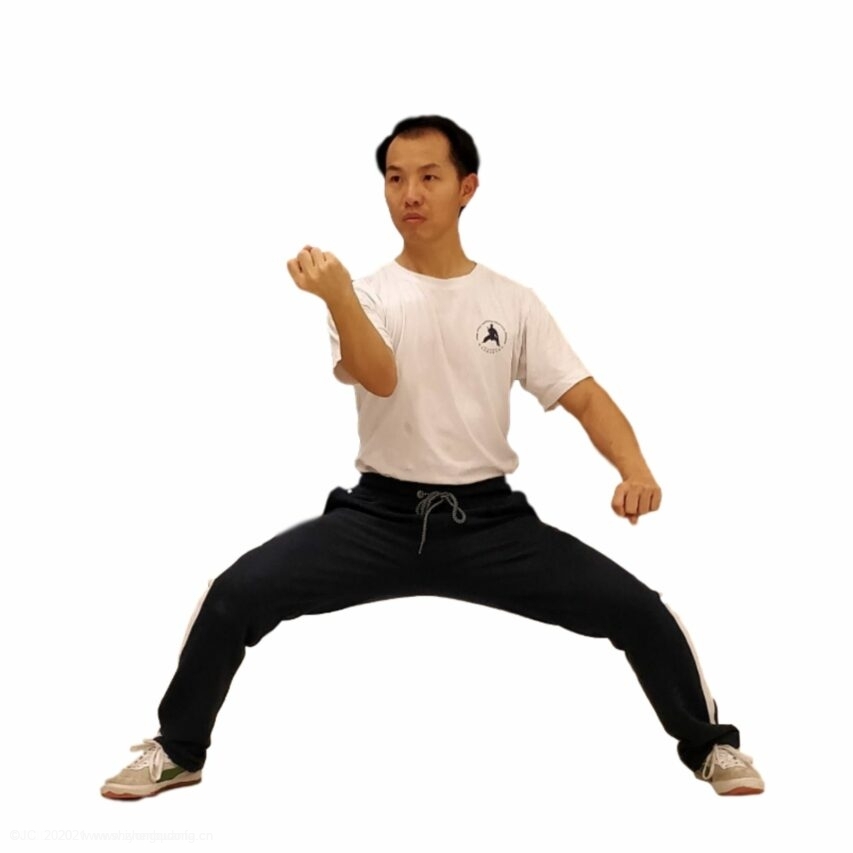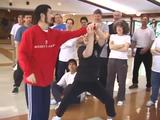
Morning Session
1-2-3 in general means that we must have a method, and there is a procedure.
We have to listen with our eyes. We can’t just close our eyes and say that we are listening.
Positive Circle
- Move one part
- Move two parts
- Move three parts
Negative Circle
- Move three parts: hip, shoulder, elbow. The hip movement should be the largest. Shoulder and elbow are adjusted.
- Move two parts: Both hips move, upper body does not move. The elbow is in place passively.
- Move one part: Do not move your upper arm and out-with-hand. Finally, turn your shoulders a little, and it causes the whole arm while not moving to be turned.
Our previous habits are too deeply ingrained, and Taiji occupies too little space in our lives, so the mind is always thinking about the way of the past. It makes new habit forming very difficult.
Master Chen corrected some of the students’ negative cirles.
Common mistake: The action is too smooth. 1-2-3 is not clear. We should practice the action distinctively. The smoothness or the displacement of a body part is an illusion. What we do is a series of independent actions. We see a movie but it is made of a series of sequential pictures, which are played quickly to create an illustion that the objects in the pictures are moving.
Whereever Master Chen says doesn’t move, it shouldn’t move. You can move whatever he didn’t mention. He only cares about the places where specific instructions are made.
Master Chen reminded us that the place where we did not move kept our external appearance and structure unchanged.
Double Downward Squeeze: After the elbow is in place, the elbow (upper arm) does not move, and the hand goes out.
“通”: means to go through.
Afternoon Session
Two ways to teach:
- Don’t tell you everything upfront, and let you figure out yourself.
- Tell you everything upfront.
Different people may be more suited for one or the other.
There must be some give in the material in order to allow a stretch to happen.
We must do something in training to create a change in the body. We want the body to be more elastic.
Practical Method trains to be longer, external style trains to be stronger. Different body parts contribute to the overall increase in length.
Negative circle:
1st Count: Elbow is stretched against the two ends (hand and shoulder). The middle finger must be fixed on a dot in the 3-D space. (Like how one end of a rubber band is fixed on the wall). The arm must be trained to be like a rubber band.
Master Chen did a few corrections on people for the first count of the negative circle.
He emphasied on the use of the kua to drive this action.
The hand is tied to the elbow. The elbow is the tied to the kua.
The kua drives the elbow, the elbow is stetched against the hand and the shoulder, while the middle finger tip stays at the same spot. The will be stretches in the forearm, upper arm, the back between the shoulder and the kua.
He then showed front kua action for the positive circle.
For my correction, it was ok in terms of driving the action from the front kua, which should be the biggest action. The front hand was also driven out. However, the line was between the front hand and the rear shoulder. Master Chen wanted me to change the line to be between the front hand and the rear foot. I need to rotate on the line between my front elbow and rear kua.
My problems:
- My rear kua was moving as I moved my front kua.
- I was moving my rear shoulder too much. My power is leaked there.
What to do:
- The rear kua needs to be not moving. The right kua and the rear knee are the opposite pair. The rear shoulder just adjusts and adapts.
- In with elbow, the front kua is the seat. Out with hand, the rear kua is the seat. The seat must be stable.
- In the 3-count positive cirlce: In with elbow, turn with kua, out with hand. When we do turn with (front) kua, the rear kua does not move. This action itself has already started to drive the hand out. When the front kua can’t go anymore, we open the armpit, and the rear knee while the rear kua is still not moving.


